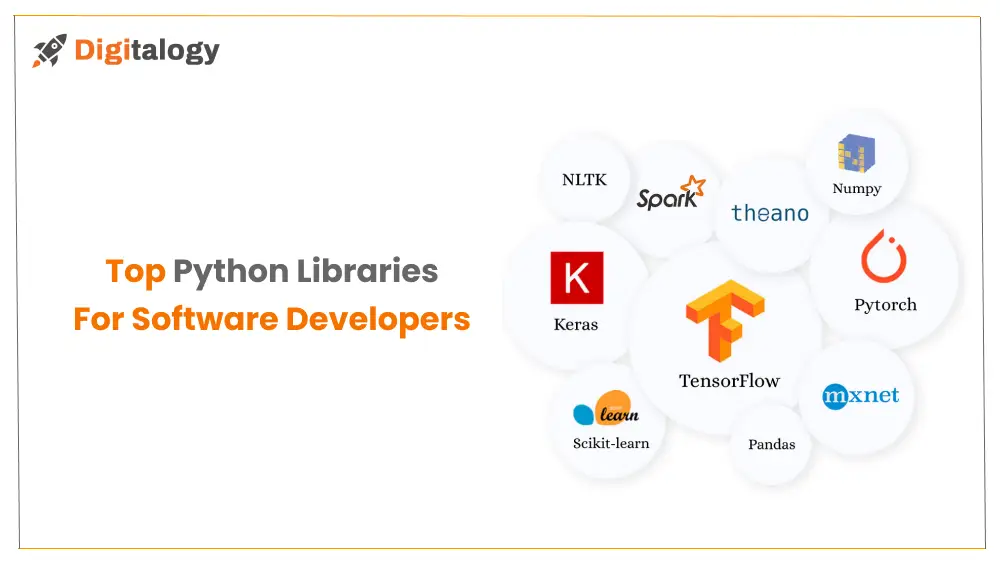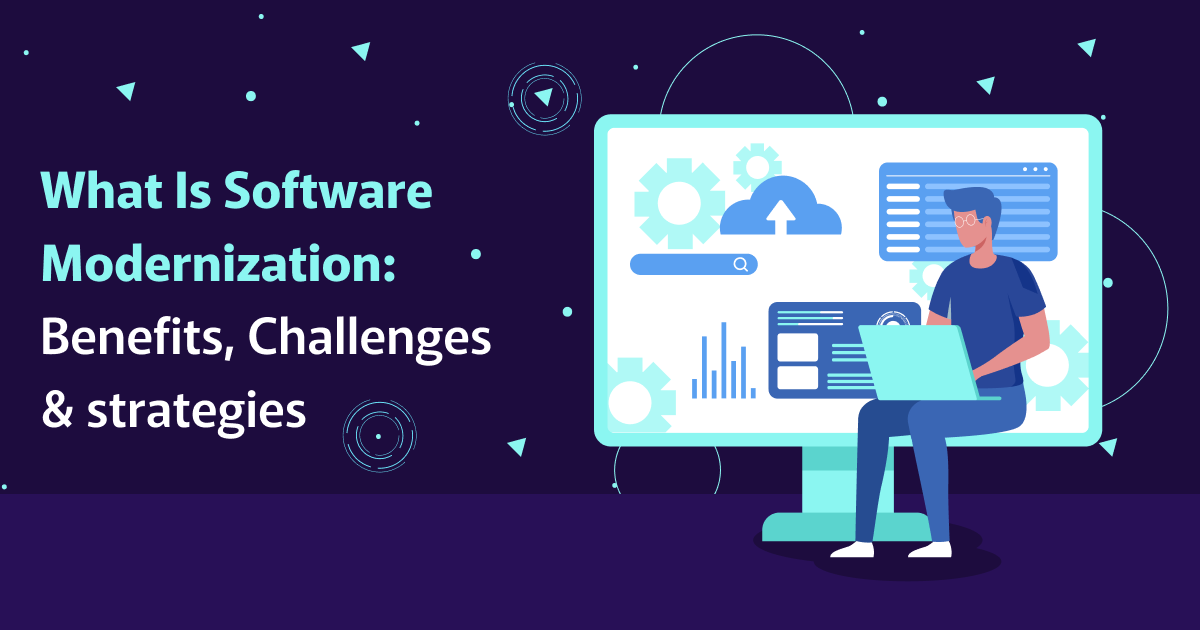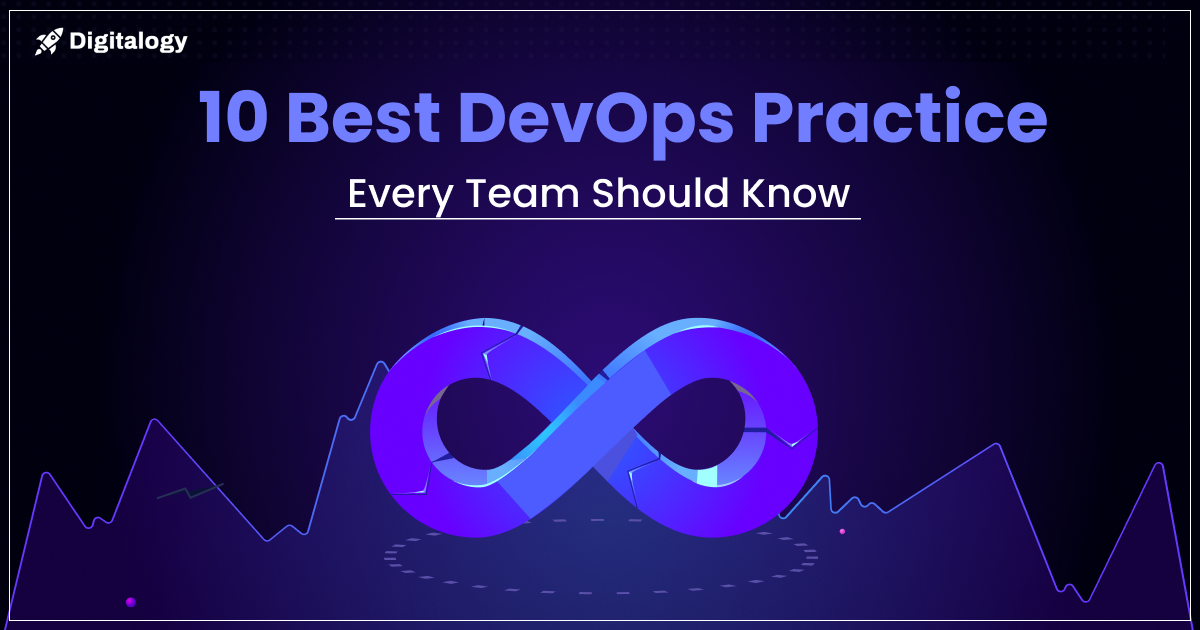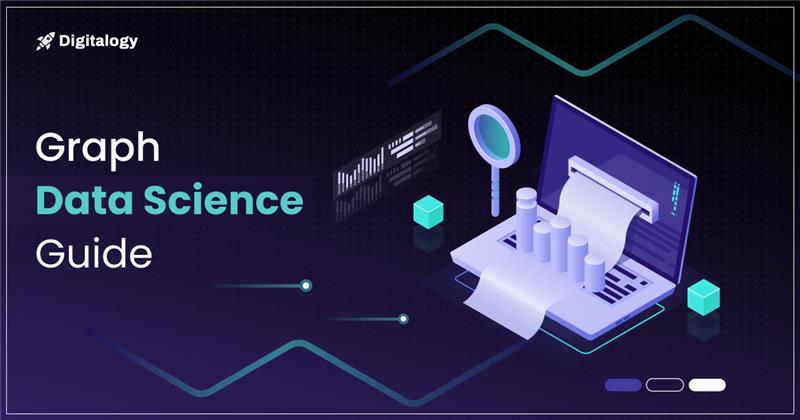In this article, you will find the Top 10 Python Libraries that you should use as a software developer in 2024
What is Python – A Brief Introduction
Python is a high-level programming language used for creating applications and web interfaces. Python is a great choice for programming because of its easy syntax and dynamic semantics. This language enables the rapid and accurate creation of applications. When it comes to web development specifically, there are numerous Python frameworks for web development that streamline and enhance the process, making it even more efficient for developers.
The language is an old one with its 31st anniversary just finished in 2023. Despite being an old programming language, It is still very popular among Python experts because it goes through many updates and is in line with today’s application development goals.
There are other significant programming languages that pose challenges for Python. However, as a programming language, Python is an advanced option that you can use to create new applications.
Several significant and popular applications, including Instagram and Facebook, were developed utilizing Python. There are many areas in which important Python libraries work to create applications. Python is very active in the current areas of data science, artificial intelligence, and web development.
List of Top 9 Important Python Libraries Everyone Must Know in 2024
Like Python, popular Python-based libraries and development tools are also evolving. For example, there are many new libraries in Python that software developers will prefer to use in 2024.
1. TensorFlow
The TensorFlow library is a popular open-source library in Python. The library is particularly great for developing machine learning projects. The library has the expertise of Google behind it. The library works as a computational library for writing new algorithms. The library especially focuses on the development of tensor operations and neural networks.
Python’s library is optimized for speed, facilitating the rapid development of applications. Another feature of TensorFlow that makes it a great Python development framework is responsiveness. The responsive construct of the library helps you visualize different parts of the program to change as per need.
The framework is also very flexible, and you can make changes in different components very easily. Google has used the TensorFlow framework to develop and support applications such as Google Photos and Google Voice typing.
2. Scikit-Learn
One of the most popular Python libraries is the Scikit Learn Python Library, renowned for its close association with NumPy and SciPy. If you plan to work with complex data sets, you can use the library for fast and simple development. The library has multiple updates to the framework, and it is one of the best frameworks to operate within software development.
The Scikit Learn Platform has features such as cross-validation of the software application models. The library also has a feature extraction process that extracts data from images and text for use in the application.
3. Keras
The next Python development library that we discuss is Keras. The Keras library is a machine-learning library that has multiple features to support app development. The library is used to develop neural networks for machine learning applications.
It has multiple features and tools that help in compiling models and visualization and compiling of data sets. The Keras library depends on the TensorFlow library indirectly for some of its functions. The portability of the models in this library is a definite advantage.
The library adapts well to different application models and works well with the CPU and the GPU. Keras is a modular library and has flexibility and dynamic expression of the coded features.
Apart from the development of the application, it also becomes very easy to debug. The Keras Python library is already in popular Python libraries and is used with the Netflix and Uber apps. The pre-organized data sets and pre-trained models make software development easier than before.
Researchers in the field of deep learning increasingly prefer the library as it gradually adapts to meet deep learning objectives. Owing to its potential for deep learning, scientific organizations such as CERN and NASA have adopted the library.
Also read: Top JavaScript Libraries In 2024
4. PyTorch
PyTorch is a good machine-learning library that you can use for multiple purposes. The large machine-learning library is used to code for tensor computations. The library also works with computational graphs and offers automation in calculations.
It also offers strong APIs for solving specific problems in the application framework. The PyTorch library is based on the Torch library, which is a machine-learning library. The open-source library is incorporated with C to create PyTorch.
The front end of the PyTorch Python library offers developers an advantage, as it allows for the flexible creation of applications. The front end allows the programmer to take decisive actions as needed for application development. The library has native support and asynchronous operations.
The library supports performance in production and research with communication channels and collective operations. The library has a Python-first approach that deeply integrates with Python and other allied libraries for a project. PyTorch is usually used for its natural language processing capabilities.
5. LightGBM
LightGBM is a major development platform and machine learning library. The developers use it to build new algorithms with new elementary models and decision trees. Python developers favor LightGBM because it supports applications with high computational power and promotes efficient development.
The productivity of this library surpasses other such libraries. The library is very intuitive and adapts to the user’s needs and actions. Once you learn how to use the library for different purposes, this can be a go-to library.
The Python library has an easier learning curve as compared to other libraries, so developers at all levels can use it to create new applications. It is very efficient and secure, so it can be used to create new applications without any major errors.
For accuracy and integrity, LightGBM is the best Python library. The library is truly scalable and preferred by new-age machine learning professionals.
6. Eli5
The Eli5 library is another Python library that you can use for Python application development. The library has the advantage of visualization and debugging application development. It tracks all the working steps of an algorithm so that developers can change the steps when needed.
Another feature of the library is that it works seamlessly with other Python libraries for better application development.
There are many application areas in which Eli5 can be used. For example, the library can develop accurate mathematical applications that require precision-level computations in a short time.
The collaborative and connecting approach the library has with other libraries also helps programmers create feature-rich Python applications. The library also works for updating legacy applications and bringing digital transformation to old apps.
Also read: Top 22 React Component Libraries For 2024
7. SciPy
Another Python Library that you should know about is SciPy. SciPy is a machine learning library that engineers and developers prefer. The SciPy library contains modules for app integration, linear algebra computation, and optimization of the entire application framework.
SciPy specializes in numeric operations that go into the computational framework of the application. The library is a well-defined computational framework with all the sub-modules well documented.
The application of SciPy is more toward scientific application programming. The application integrates differential solutions, linear algebra, and other mathematical operations with the help of this particular Python Library.
8. Theano
The Theano library is a good Python library that has machine-learning computational abilities. The library is used to compute multidimensional arrays based on the Python language. The Theano library works in a similar way to TensorFlow, but it has some distinct differences.
Because of its multidimensional computations, the library is great for use in parallel Python environments. The library supports data-intensive operations with the help of a GPU and runs faster than a CPU.
Apart from dynamic C code generation, you can also do unit testing and self-verification with the help of Theano. The library, therefore, provides the developer with an error-free application model.
Theano is meant for professional and expert Python-level developers. The symbolic syntax of Theano can be complex for beginners. However, this is a good library for neural network processes and deep learning objectives.
It was one of the first libraries for deep learning objectives and was floated in 2007. Theano is growing with the number and scale of neural network projects on the development scene today.
9. Pandas
Pandas is a machine learning library rooted in Python that is oriented toward data organization and analysis. One of the greatest features of the library is to translate complex data operations with the help of simple commands.
As industries move towards applications of data science, the use of Pandas will be widespread. The Pandas library has many operations, such as grouping and combining data, reindexing data, and filtering data for analysis.
You can do sorting, aggregations, and data visualization with the help of the library. Pandas are still updating as a library, and it has a feature-rich interface. With its many features, the library not only codes for data analysis tools but also debugs, fixes, and enhances the applications at the end. The major application of Pandas is in the area of data interpretation and analysis.
Also read: Top 10+ R Libraries For Data Visualization – [ 2024 Updated ]
Conclusion
These are the top 9 Python Libraries that developers use today for multiple purposes. Python libraries offer diverse utilities, ranging from deep learning modules and processes, and computations, to data analysis. The libraries are feature-rich, highly functional, and flexible. Depending on the output you expect and the project requirements, you can choose the library you work on for your future project.







